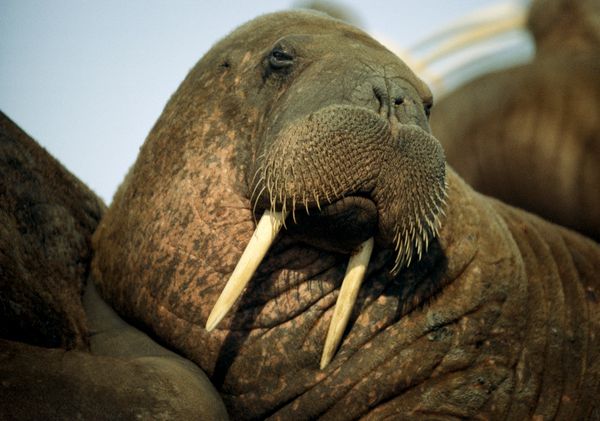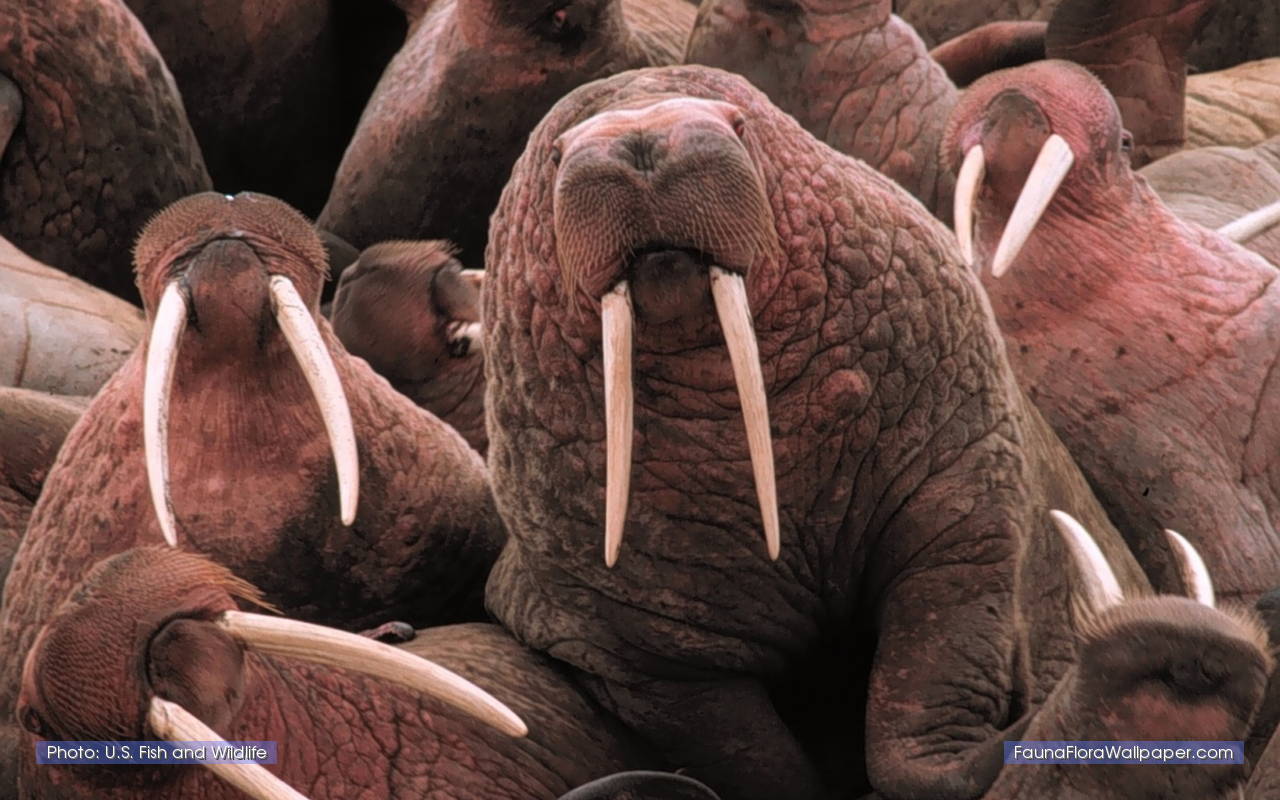|
Classification
Kingdom: Animalia
Phylum: Chordata
Class: Mammalia
Order: Pinnipedia
Family: Odobenidae
Genus Species: Odobenus romarus
General Information
The Walrus can be recognized by its prominent tusks, great bulk, and
whiskers. Males can weigh from 1,800 to 4,000 pounds, and females
can weight about two-thirds as much. Their ancestors are closely
related to bears.
Walruses are endothermic, because they couldn't survive in the arctic
otherwise. They migrate in between late spring and early summer from
the ice to the beach. Walruses do not undergo hibernation or
estivation. They have elongated canines which can be used for
fighting, dominance, and display. The tusks can reach up to one
meter long. There are nearly 200,000 Pacific Walruses, and only
20,000 Atlantic Walruses. Arctic people used the skin and bones in
ceremonies. The native people used every part of the walrus and
nothing was ever wasted.
Habitat
During the cold months walruses live on the ice, and migrate to rocky
beaches to reproduce in the spring. Most walruses can be found near
the North Pole where it is rather chilly.
Diet
Most walruses find their meals near the sea floor. They feed on
anything from shrimp, crabs, tube worms, soft corals, tunicates, sea
cucumbers, various mollusks, and even parts of other pinnipeds.
Walruses could be classified as scavengers because they search the sea
floor for their meals.
Reproduction
Walruses have internal fertilization with direct development. They
are placental mammals. Females go into heat in late summer and
around February, but males are only fertile around February.
Breeding occers from January to March. Gestation lasts from fifteen
to sixteen months. The first three to four months are spent within
the blastual in suspended development before it implants itself in the
placenta. When the claves are born they weigh from 99 to 170 pounds,
and are able to swim. The mothers take care of the young for about a
year. They only give birth about every two years, which is the
lowest rate of all pinnipeds. Walruses live in large colonies.
Human Impact
The Pacific Walrus is not considered to depleted according to the Marine
Mammal Protection Act. Walruses have been hunted commercially for
their meat, skin, and ivory tusks by traders from Norway, Russia, Great
Britain, Greenland, Canada, and the United States. Walruses are
hunted at sea an only half of them are recovered when killed; the other
half sink to the bottom of the sea.
Body Systems
Walruses have unique lungs for breathing. They
have pockets on each side of their trachea that can hold up to fifty
liters of air, so they can breath while underwater. They also have a
diaphragm to support their lungs. The walrus has no external
ears. They have a four chambered heart.
Special
Features
A walrus is born with hair. Walruses are known for their large
tusks. They are actually three feet long canines. They use
their tusks for protection and to help them get their large bodies out of
the water. Since the walrus finds its food near the ocean floor, it
uses it very sensitive whiskers as a detection device.
Web Links
http://www.defenders.org/wildlife_and_habitat/wildlife/walrus.php
http://library.thinkquest.org/3500/walrus.html
Sources
http://en.wikipedia.org/wiki/Walrus
http://www.seaworld.org/infobooks/Walrus/deathwal.html
http://sapedia.gosaints.org/index.php?title=Walrus
http://animals.nationalgeographic.com/animals/mammals/walrus/
by Rachael and Jani
|


